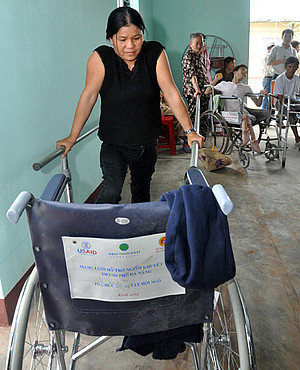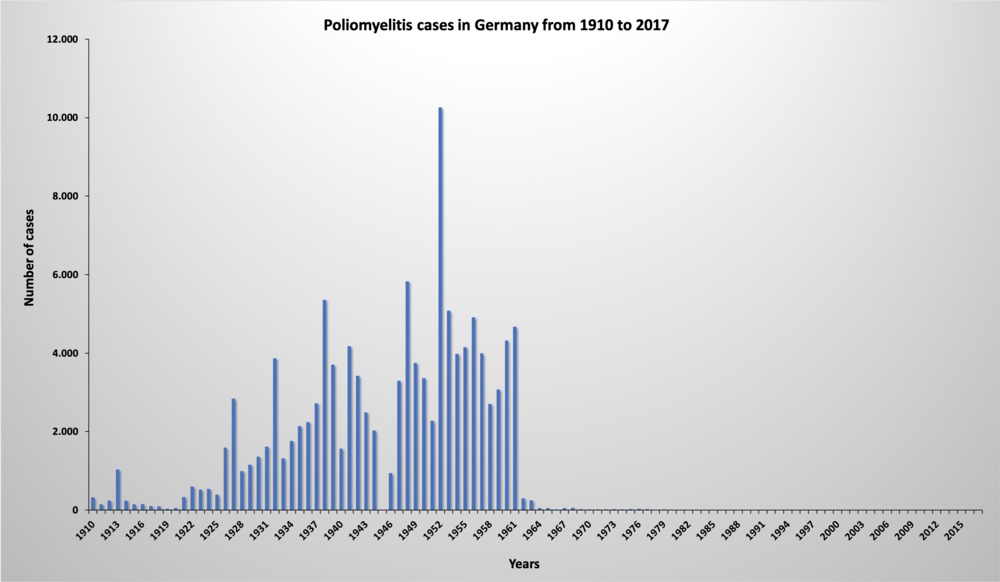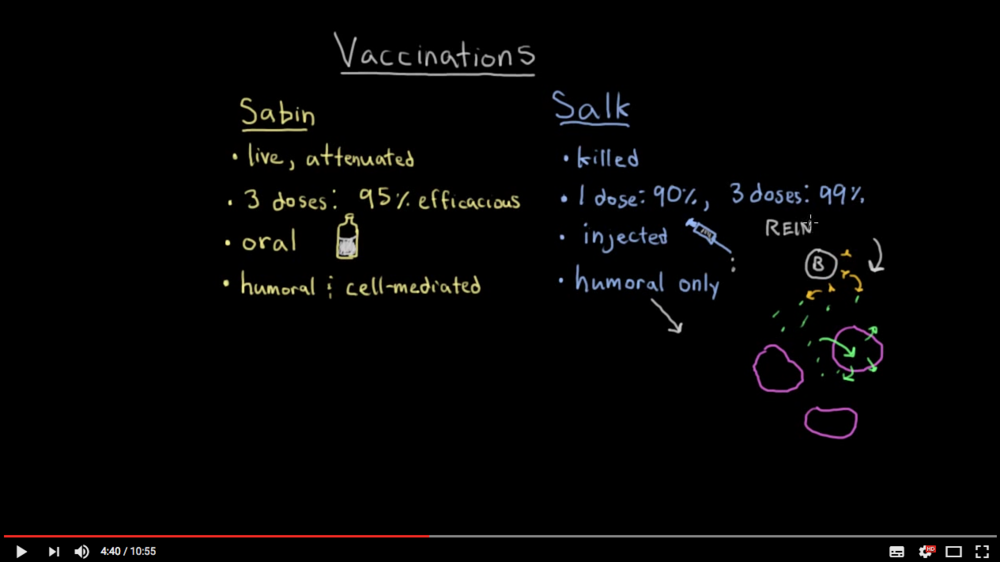Polio - almost eradicated thanks to animal research
Due to research with rhesus monkeys and chimpanzees in the 1950s, scientists in the USA were able to find vaccines against poliomyelitis, also known as "child paralysis". The polio virus that spread around the world between 1900 and 1960 infected the nerve cells of the spinal cord and often lead to severe paralysis and in some cases to death. Since the beginning of the 20th century, polio has been an epidemic that surfaced in Europe and the USA every five to six years. Thousands of patients, especially children have died. The World Health Organization estimates that the vaccines have worldwide saved an estimated 13 million children from a polio outbreak and possible death since 2000. Since 1988, the global polio infection numbers have declined by 99 per cent from 350,000 to 37 reported cases in 2016.
Initially, monkeys were indispensable as a model for a clear identification and a more detailed description of the disease: In 1908 animal experiments helped the pathologist and Nobel laureate Karl Landsteiner and the physician Erwin Popper to conclude that the cause of the disease was a virus that attacks nerve cells and therefore led to humans paralyzes. During the vaccine development, scientists initially demonstrated that blood serum of infected rhesus monkeys could protect against the polio virus. Later, infected patients where the disease did not break out could also spread the disease. In fact, according to the WHO, 90 per cent of all infected persons develop no or only mild symptoms and remained undetected.
Inactivated vaccine from Jonas Salk
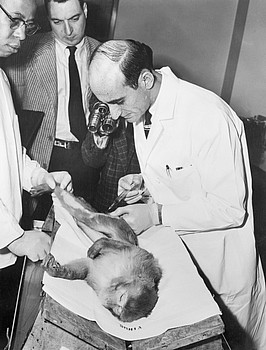
Subsequently, animal experiments with non-human primates played an important role in the parallel development of two different vaccines against polio. In the 1950s, Jonas Salk developed a vaccine based on inactivated polioviruses to inject into patients, followed shortly by Albert Sabin with an oral vaccine. Salk tested his vaccine for toxicity and efficacy in monkeys before the drug was voluntarily tested on children in a large study in the US. In addition, a cell line for the production of this so-called inactivated vaccine, which stems from the kidney cells of vervet monkey to increase the viruses, was developed.
Since there is a statistical risk of becoming ill from the vaccine poliomyelitis, the inactivated vaccine is now used in countries where the virus is considered to be eradicated. According to “Polio-Selbsthilfe”, one out of 600,000 will become ill again and one percent of these cases will become paralyzed.
Oral vaccine of Albert Sabin
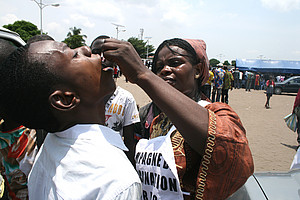
Parallel to Jonas Salk, the virologist Albert Sabin developed an oral vaccine against polio. In the development of this vaccine, Sabin was dependent on experiments not only with rhesus monkeys, but also with rodents. According to Sabin, these experiments were indispensable to determine among other things the different characteristics of different polio virus strains. The current vaccines provide protection against three different types of polio viruses.
The oral vaccine works according to the principle that a dose of so-called attenuated viruses from different strains is swallowed. Attenuated viruses are those where through controlled mutation of the genes, the pathogenic characteristics no longer occur. In this initial attenuation of the viruses, Sabin was again dependent on monkeys as experimental animals: in order to find the mutant viruses among those that did not cause illness, an increase in the viral strains was necessary. For this, Sabin had to use monkeys as well as virus cell cultures that had just been discovered. Rhesus monkeys were also needed as test models for the vaccine.
In addition, the scientists around Sabin needed the animals during the initial stages of development for the production of the actual oral vaccine. According to Smithsonian National Museum of the United States, one rhesus monkey delivered 65 doses of the vaccine for humans. Meanwhile, the attenuated viruses of Sabin are propagated in a seed system.
With the help of this vaccine, the disease could actually be eradicated in 121 out of 125 countries. Millions of children have been vaccinated worldwide and the infection rate has been reduced from one hundred thousand to one thousand a year. Because of the simplified application, efficacy and low cost, the oral vaccine is still used in countries where the wild virus is still common.
In this video of Khan academy you can learn more about the Salk and Sabin vaccination:
The chart shows the number of poliomyelitis cases in Germany from 1910 until today. Since the introduction of vaccinations by Jonas Salk (1955) and Albert Sabin (1961), the number of infections has decreased significantly. No poliomyelitis cases have been reported in Germany since 2000. Graphic: Sylvia Ranneberg, Sources: Pöhn HP, Rasch G, (1994): Statistik meldepflichtiger übertragbarer Krankheiten. Vom Beginn der Aufzeichnungen bis heute. München, MMV Medizin Verlag; Federal health monitoring database, infections/notifiable diseases, polio diseases, www.gbe-bund.de
In this video of Khan academy, the exact mechanism of the two vaccines of Salk an Sabin is explained in detail.

